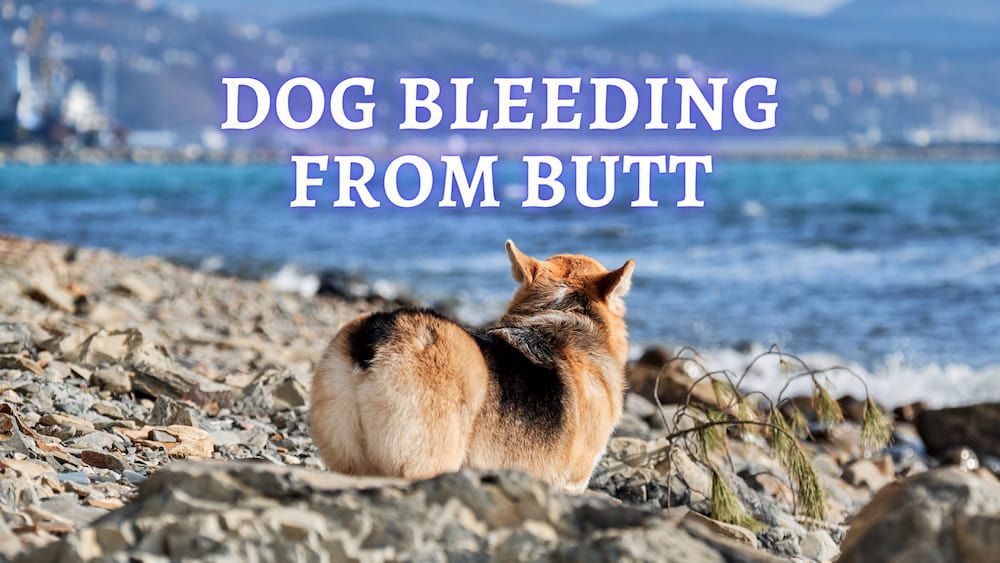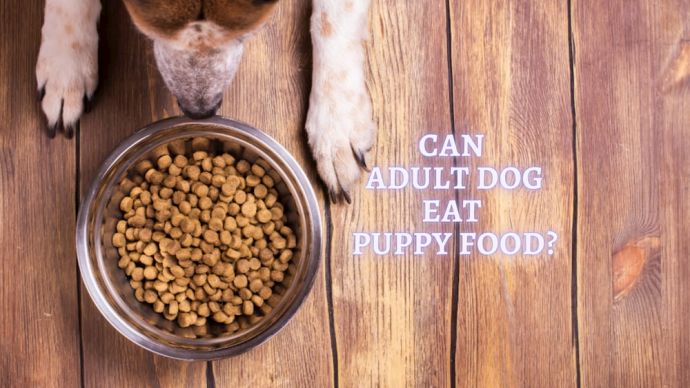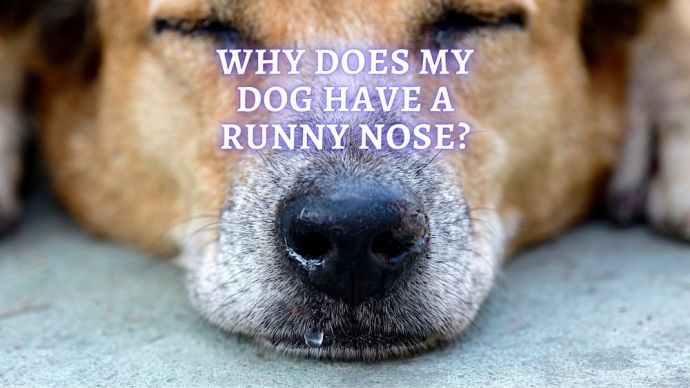Why Is My Dog Bleeding From Its Butt? Causes and treatment of rectal bleeding in the dog
Written by:
Author: Marissa Prizio
Marissa Prizio attended the University of New Hampshire and earned a bachelor's degree in biomedical Animal Science. Marissa has always enjoyed writing; she was even mixing literature classes into her science major in college. During her writing career, she has edited eBooks, written for a variety of websites, and created audio-visual courses for sustainability.
View all 36 articlesLearn about our editorial process and veterinary review board.
Viewed: 22074
Updated on: 08/24/2023
The sight of blood is distressing in most scenarios, especially when it has to do with our pets. Most cuts and scrapes are easily identifiable, but that isn’t always the case. Bleeding can come from or happen around the anus, and this can be very troubling.
The anus is a direct passage to many complex internal structures and various conditions can cause it to bleed. Understanding what conditions can cause this concerning symptom can better prepare you to help a dog bleeding from the butt.
Why is my dog bleeding from the butt?
If you notice that your dog has suddenly started bleeding from their butt, you should take action. Calling your veterinarian for guidance is a great place to start, and they will probably have a few questions.
- How much blood?
- How long have they been bleeding?
- Is there blood in the stool and are they experiencing diarrhea?
- Has your dog eaten anything odd recently?
- Is your dog fully vaccinated?
- Are there any other symptoms of discomfort your dog is displaying?
These are just a few of the questions you may be asked, and having the answers can be very helpful when your veterinarian examines your pet. These questions can highlight clues that lead your veterinarian to the most likely diagnosis for your pet’s bleeding rectum. We will discuss these possible diagnoses in the following sections.
RELATED: My Dog has Diarrhea But is Acting Fine (Vet Approved Advice)
Symptoms of infected or ruptured anal glands
Anal glands are an organ that humans don’t have. These glands are more like anal sacks that are internal and sit on either side of your dog’s anus. They work as sent glands, marking your dog’s stool.[1] You may have noticed that dogs often sniff each other’s rear ends because they identify each other using their scent glands.
Anal glands are helpful in the social and often territorial world of dogs during normal functions, but they can also be hurtful. An anal gland can become infected when they don’t secrete normally and are infiltrated by bacteria. Anal gland infection can be really serious, much like any other infection. An anal sac that does not recieve treatment may swell, become painful, ooze bloody discharge, become swollen, and even rupture. [1]
Rectal bleeding can be a result of infected or ruptured anal glands. If you notice that your dog is straining to defecate, is scooting around on their butt, has a swollen red area around their anus, or seems very sensitive around their rear end, then they may be experiencing anal gland issues.
READ MORE: My Dog Has a Sore Bum: What Can I Put on It?
How to treat infected or impacted anal glands
Anal glands are in a tough position to treat. First off, they tend to be very sensitive when they become impacted and are painful when infected. Dogs may need to be restrained or even sedated depending on how painful their anal sacs are. [1] Pain medications may also be administered after treatment for a dog suffering from extreme discomfort.
Impacted anal glands that are not yet infected are often expressed manually by a veterinary professional. After this manual expression of the impacted material, the two scent glands can resume their normal function. Anti-inflammatory and antibiotics medication may also be administered depending on each dog’s condition.
When an anal sac has a bacterial infection, treatment becomes a bit more difficult. The glands must be expressed, but due to the swelling and discomfort that comes with this, more antibiotics may be required. Applying a warm compress to the external area around your dog’s anal glands is also commonly recommended after treatment. [1]
If the infected anal sacs have grown into abscesses but have not ruptured, minor surgical intervention may be required to manually rupture the abscesses & treat the area around your dog’s anus. Dogs don’t need their anal glands to survive, so severe or repeated cases may require surgical removal to prevent any further suffering. [1]
Large dogs and small dogs are both susceptible to anal gland disease, so it is crucial to be aware of the signs discussed above. The earlier you notice this condition, the less invasive the treatment will likely be. If left unattended, the infection resulting damage will be very difficult to resolve.
RELATED: How Often to Express Dog Glands?
Hemorrhage in the digestive system and
The gastrointestinal tract in dogs is a fairly hearty system, but it is still susceptible to damage and infectious diseases. When there is a hemorrhage in the digestive tract, dogs tend to have a bloody stool that can appear very red or be hidden in the stool, making it harder to identify. This can sometimes be accompanied by vomiting and the discomfort associated with this condition tends to cause lethargy.
A hemorrhage in the digestive organs can result from various primary conditions and happen at different intensities. Some of the most common reasons that have been connected to intestinal hemorrhage include: [2]
- Reactions to certain medications
- Metabolic diseases
- Blood flow restriction related to the intestine (Ischemia)
- Trama (Intense physical impact or the ingestion of a foreign body)
- Fungal infections
- Bacterial infections
- Parasitic infections
- Viral infections (such as parvo)
- Algal infections
- Tumor growth (neoplasias)
- Rectal polyps [6]
The length of this list can be intimidating and somewhat vague, but that is because hemorrhage is often the result of a primary issue. If traumatic events, diseases, and infections are caught early enough their impacts are generally less severe.
The ingestion of foreign bodies can lead to trauma and ischemia. [2] Items like string, bone fragments, and other non-food objects the digestive system is not equipt to handle are damaging but can be prevented or managed with early action. The same is true with many of the other conditions listed prior.
Treating the hemorrhage in the digestive system
Treating hemorrhage of the gastrointestinal tract is no simple feat. In cases where the primary cause of this condition is not obvious or the condition is recurring, multiple tests may be required. Unlike situations where changing your dog’s diet to a bland diet solves diarrhea, hemorrhagic gastroenteritis generally requires more action. [3]
If the cause is a foreign body in the intestinal tract, it will need to be removed. If an infection is at the root of their condition, then it will need to be treated. The treatment is highly dependent on your pet’s particular condition and the severity of their symptoms. The best thing pet parents can do is stay aware of changes in their pet’s stool, behaviors, and any actions that can cause damage to the digestive organs.
Symptoms of hematocheziain and hemorrhagic gastroenteritis
Hematocheziain is one of the most identifiable forms of hemorrhagic gastroenteritis. [3] This is because bloody diarrhea or stool that is produced has a bright red color to it. This may signify that the cause of the blood is closer to the anal area.
In other cases of hemorrhagic gastroenteritis, blood in the stool may not be visible at first glance, which is referred to as being occult. [4] There can even be blood with a raspberry jam like appearance in the stool. Any blood, regardless of color and quantity, should be reported to your veterinarian as a precaution. In most cases, collecting a sample of any bloody stool produced can also be helpful to show the vet but do so with sanitary precautions.
What does it mean if my dog is bleeding from the rectum and throwing up?
Diarrhea and vomiting are a concerning combination of symptoms that can result from a variety of conditions. When blood is found in the feces of a dog with vomiting and loose stool, parvovirus is one of the first concerns to be assessed.
This is a life threatening condition that is highly contagious to other dogs and puppies. Veterinary medicine commonly identifies this virus through testing of a fecal sample, but the distinct odor of bloody diarrhea caused by parvo is also a clear symptom. [5]
With immediate action and appropriate treatment, some dogs are able to survive this virus. Fluid therapy and anti vomiting medications may be administered by your veterinarian to improve your dog’s chances of survival, but there is no medication that can kill the virus. [5] The best thing you can do is strive to prevent parvo by getting your pet routinely vaccinated against it and not letting an unvaccinated dog interact with other unknown or ill dogs.
READ MORE: Why is my Dog throwing up: Causes and Preventing (Veterinary Advice)
Other causes of rectal bleeding in dogs
The causes of rectal bleeding discussed above are common concerns, but they are not the only reason blood can come from your dog’s anal area. Rectal polyps near the anal opening, clotting disorders, and even a combination of these medical conditions can lead to blood coming from the anus. [6]
Without a physical exam, it can be difficult for veterinarians to provide a correct diagnosis; additional testing may also be required depending on your pet’s symptoms. Regardless of the medical condition, it is always best to have your dog seen by a veterinarian or at least reach out for guidance any time you find blood that came from their rear end.
The faster you act and the more aware you are of related conditions, the better your dog’s prognosis may be!
Article Sources:
- “Anal Sac Disease in Dogs” VCA Animal Hospital, vcahospitals.com/know-your-pet/anal-sac-disease-in-dogs.
- Boysen, Søren. “Gastrointestinal Hemorrhage.” National Library Of Medicine, 25 June 2014, ncbi.nlm.nih.gov/pmc/articles/PMC7152172/.
- Weir, Malcolm, et al. “Acute Hemorrhagic Diarrhea Syndrome in Dogs (Hemorrhagic Gastroenteritis) | VCA Animal Hospital.” Vca, vcahospitals.com/know-your-pet/hemorrhagic-gastroenteritis-in-dogs.
- Ferri, Fred. “Occult or Minimal Rectal Bleeding.” Science Direct, sciencedirect.com/topics/medicine-and-dentistry/rectal-bleeding.
- “Canine Parvovirus.” American Veterinary Medical Association, avma.org/resources-tools/pet-owners/petcare/canine-parvovirus.
- Gallagher, Alex. “Rectal Polyps in Dogs and Cats – Digestive Tract – Merck Veterinary Manual.” Merck Veterinary Manual, 4 Aug. 2022, merckvetmanual.com/digestive/diseases-of-the-rectum-and-anus/rectal-polyps-in-dogs-and-cats .
 Dog Care Can Dogs Eat Sour Cream? Benefits and Risks of Feeding Your Dog Sour Cream
Dog Care Can Dogs Eat Sour Cream? Benefits and Risks of Feeding Your Dog Sour Cream - 5864
- 0
 Dog Veterinary Tips Why is my Dog throwing up: Causes and Preventing (Veterinary Advice)
Dog Veterinary Tips Why is my Dog throwing up: Causes and Preventing (Veterinary Advice) - 23424
- 5
 Dog Care My Dog Keeps Scratching His Mouth: Reasons Why Your Dog Scratching Face
Dog Care My Dog Keeps Scratching His Mouth: Reasons Why Your Dog Scratching Face - 17560
- 1

























